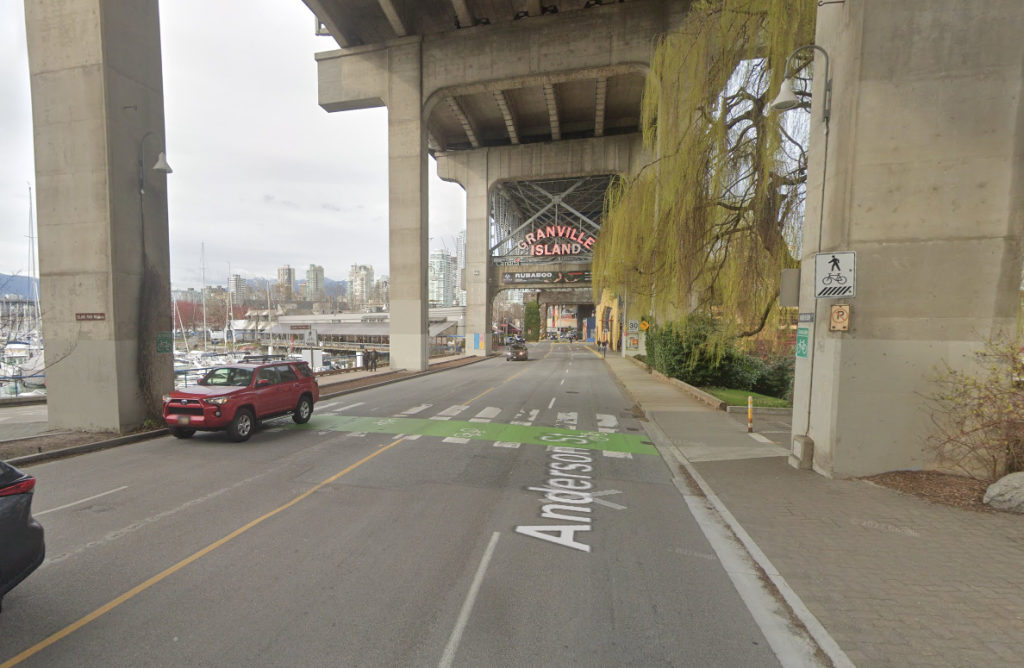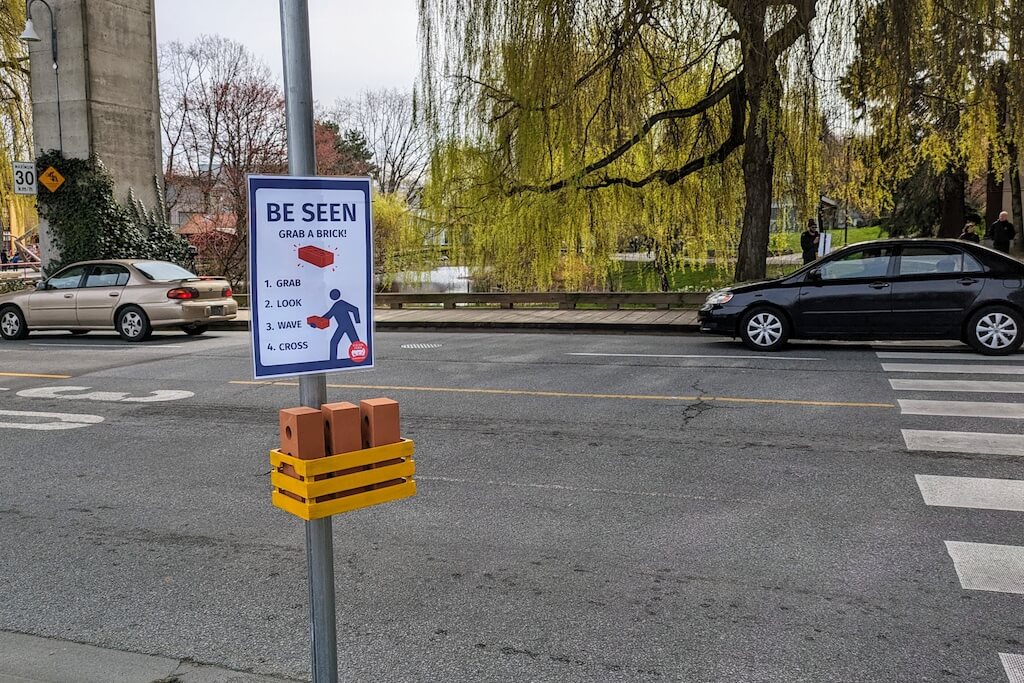Another Brick In (?) The Road
A few weeks ago, a man walked into the middle of the road in Vancouver, Canada, waving a brick in the air. Traffic safety advocates were right there — but they didn’t call the police or otherwise intervene. They did, however, record the incident and then shared it on Twitter (or “X”). It was, after all, a matter of public safety.
But not in the way you think. The brick-waving man wasn’t a threat, at least, not by design. He was a potential victim looking to protect himself. And the advocates knew this — because they gave him the brick.
And they were only half joking.
In 2000, Salt Lake City, Utah, installed the first known set of something called “pedestrian crossing flags” in a handful of crosswalks throughout the city. The idea, as seen in this picture (from Minnesota) is simple. On either side of the crosswalk is a bucket filled with brightly-colored (typically orange or yellow) flags. When you want to cross the street, you take a flag out of the bucket and carry it with you, maybe waving it around a bit. This helps cars see you, particularly from a distance, as the bright orange contrasts with the road.
It’s a good idea but it has some flaws. For example, waving a flag is kind of boring and somewhat embarrassing — who wants to walk across the street waving a bright orange or yellow flag?
So just before April 1, 2024 — and pay attention to that date — a group called Vision Zero Vancouver, decided to install a similar bin next to a crosswalk at the intersection of Anderson Street, a busy road, and Island Park Walk, a footpath, as seen at the top (via Google Maps Street View.) It’s a dangerous intersection; according to CBC News, “there were 10 crashes alone at the intersection of Anderson Street and Island Park Walk, which forms part of the seawall, between 2018 and 2022. Five of them resulted in an injury or fatality.”
Here’s a picture of what they created:
Those aren’t flags. They’re bricks. If you can’t read the sign, it says “Be Seen” in all capital letters, followed by “Grab a Brick!” in smaller caps below. Then, the sign lists four one-word instructions: Grab, Look, Wave, Cross — the same basic idea behind pedestrian crossing flags. Bricks, of course, can be used by pedestrians to fight back against reckless drivers (depending on how good your aim is), and as VZV volunteer Lucy Maloney told CBC Vancouver, the idea was “to provoke debate and thought about the power imbalance between two-ton motor vehicles and [pedestrians].” But don’t worry about an angry person hurling a brick at a car — the ones provided by VZV are made of foam, and couldn’t do a lot of damage beyond startling a driver.
While it started off as an April Fool’s joke, the idea earned a good amount of attention on Twitter, with VZV’s video garnering more than a million views, provoking a conversation around whether this should be a permanent installation. But it’s unlikely that it will be and the buckets of bricks are likely already gone. VZV is a citizen action group that isn’t part of the Vancouver government, and the government probably isn’t a fan of the idea. As one local lawyer noted on TikTok, “if you are to walk across the street waving a brick at a car to threaten that you’re going to [do harm to the car or drivers],” that’s pretty clearly a crime.
Bonus fact: For older members of our population, crossing the street can be particularly tricky, as it takes longer than typical when you walk more slowly. For some, even crossing at an intersection with a Walk/Don’t Walk sign isn’t an adequate solution, as the time to cross isn’t long enough for them to safely make the trip. Bricks aren’t a great solution, but RFID-enabled ID cards may be. In Singapore, older citizens can “tap their [ID cards] on the reader mounted above the standard push-button on the traffic light pole to extend [the crossing] time by between 3 and 13 seconds, depending on the width of the crossings,” according to the Singapore Land Transporation Authority’s website.
From the Archives: Driven to Distraction: Maybe getting rid of traffic signals is the way to make driving safer?


